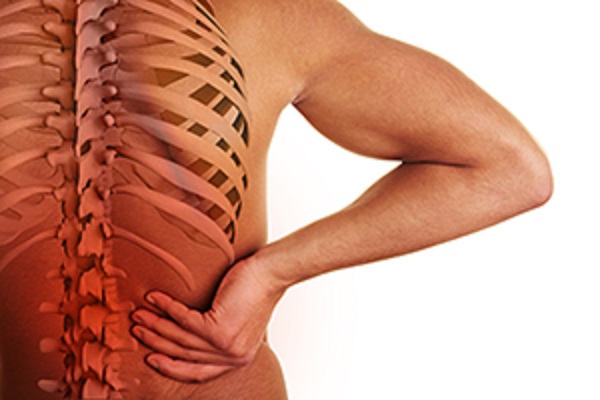
One of the most common diagnosis of lower back pain is a herniated disc. A herniated disc is a bulging spinal disc that presses on a nerve. This is a painful condition that may produce sciatica (pain in the legs and feet), numbness or tingling in legs or feet, or muscle weakness. This condition is found predominantly among those 35 to 55 years of age, or the obese.
Diagnosing a Herniated Disc
There are a number of diagnostic tools that your physician may use to confirm that you have a herniated disc. Your doctor will first compile a thorough medical history. Your physician will then examine your neurological sensitivity, reflexes and muscle strength. If there is any lingering doubt, your physician may order tests that could include X-ray, MRI, CT scan, myelogram, or EMG.
Treatment Options
Once a herniated disc is confirmed, your doctor will discuss your treatment options. In the majority of herniated disc cases, the most appropriate treatment option is rest, non-steroidal anti-inflammatory drugs like Advil or Aleve, and physical therapy. Although a herniated disc can become a serious health condition, in most circumstances, symptoms will resolve on their own or with minimal, conservative treatment.
Minimally Invasive Treatment Options
- OTC Pain medications: Pain relief for the lower back pain caused by a herniated disc can often be obtained with simple methods. For the pain and discomfort, your doctor will probably recommend NSAIDs commonly sold over the counter like Motrin, Advil or Aleve. Many people also respond favorably to cold or heat over the injured area. Ice packs should only be used judiciously since they can stiffen muscles and reduce circulation to the injury.
- Prescription Medications: If you are experiencing back spasms, your doctor may prescribe a muscle relaxant medication. If the pain is particularly intense or prolonged, your doctor may prescribe a short course of opioid pain killers. Opiod prescriptions will usually only be for 14 days or less to minimize the risk of dependence or overdose.
- Physical Therapy: Participating in physical therapy is almost always a good option for lower back pain. By working with a physical therapist, you will learn a number of methods to strengthen your back, increase flexibility and limit exposure to additional injury. During the course of your physical therapy, you may use massage, electrical stimulation, or ultrasound to mitigate your pain symptoms and improve your physical condition.
Chronic Pain Treatment Options
- Steroid Injections: If you are experiencing lower back pain for six weeks or longer, then you may be a candidate for more intensive pain relief therapies. One minimally invasive treatment option is a spinal injection with a steroid that reduces the swelling associated with a herniated disc.
- Surgery: In the most serious cases, surgery is an option. The most common surgical procedure for a herniated disc is a microdiscectomy. This minimally invasive procedure removes part of the spinal disc that is bulging out. Another option is a laminectomy. This procedure will remove part of the bony vertebrae giving the injured disc more space. Finally, a foraminotomy is another minimally invasive treatment option. This procedure enlarges the nerve passageway in the spine by cutting away part of the bone. Surgery would only be recommended as an option of last resort.
Article written by: Dr. Robert Moghim – CEO/Founder Colorado Pain Care
M.D. Disclaimer: The views expressed in this article are the personal views of Robert Moghim, M.D. and do not necessarily represent and are not intended to represent the views of the company or its employees. The information contained in this article does not constitute medical advice, nor does reading or accessing this information create a patient-provider relationship. Comments that you post will be shared with all visitors to this page. The comment feature is not governed by HIPAA and you should not post any of your private health information.



